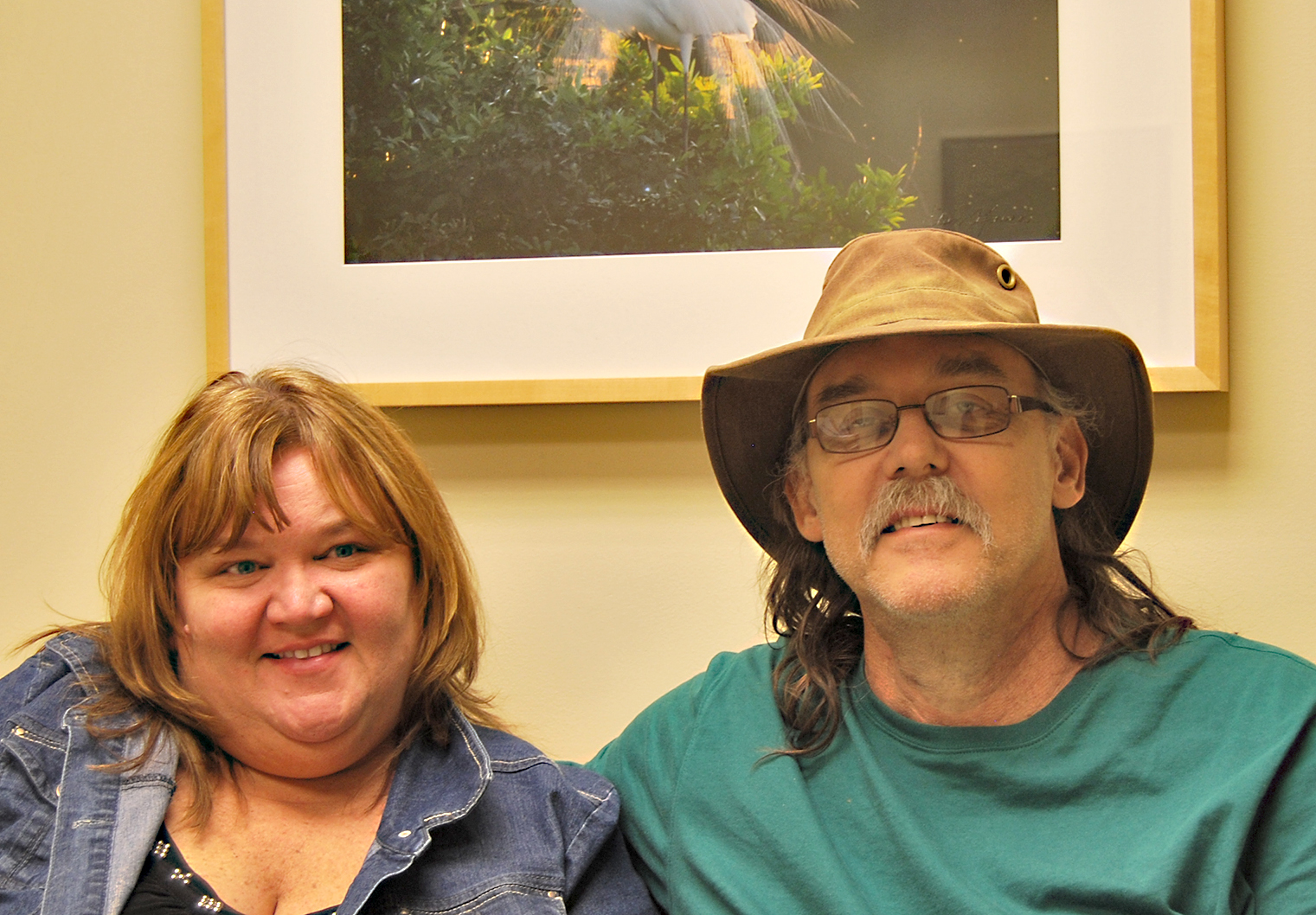Vascular surgery clinic visit becomes alert to surgically repair aortic dissection
Ishmael Hibbard, 56, was just reaching for the television remote control when sharp pains across his shoulder blades drove him down to one knee. He bit his lip so hard, it drew blood. Hibbard didn’t think it was a heart attack, but the Manchester, Kentucky native knew he needed to get to the emergency room right away.
His wife, Judy, was at work so it fell to his teenage son, Ben Hibbard, to drive him to the Manchester Memorial Hospital emergency room for treatment.
The physician on-call, noting the symptoms and Hibbard’s history of chronic high blood pressure, suspected that his patient had suffered an aortic dissection. A subsequent CT scan confirmed the result and within minutes, Hibbard was in an ambulance bound for the London-Corbin airport where an emergency helicopter waited to transport him to the UK Hospital for evaluation and treatment. The physician assigned to his care was Dr. Amy Lipscomb, a UK vascular surgeon.
An aortic dissection, Dr. Lipscomb explained, occurs when a tear in the inner wall of the aorta, the intima, allows blood to flow down a “false channel” within the middle layer of the blood vessel, the media, rather than within the intima where blood is meant to circulate.
The tear usually starts in the portion of the aorta within the chest and can continue down to the arteries of the legs, kidneys and intestines, Lipscomb continued. Acutely, this is a condition that needs urgent treatment as it can result in life-threatening problems such as abrupt loss of circulation to vital organs and possible rupture of the aorta.
An examination into Hibbard’s condition showed that he had suffered a Type B aortic dissection in which the tear is located beyond the aortic arch.
Hibbard was admitted to UK hospital and underwent aggressive measures to medically control his blood pressure. When he was discharged, Dr. Lipscomb referred the patient to see Dr. Mary Sheppard with the UK Vascular Medicine Clinic.
“If it’s possible, surgeons prefer to avoid invasive procedures with a type B aortic dissection. Our first effort is to treat it medically through aggressive management of high blood pressure,” commented Dr. Sheppard. Regarding Hibbard’s case, Sheppard reviewed his recent history and began close outpatient monitoring. The first day Dr. Sheppard saw Mr. Hibbard in clinic, labs revealed that the patient had developed an acute kidney injury. She called Hibbard and asked him to return to UK for further evaluation of the cause.
Upon returning to UK, imaging revealed that the dissection had progressed and the aortic aneurysm had grown. Dr. Lipscomb advised to proceed with surgical repair.
The goal of the surgical procedure is to allow blood circulation to preferentially flow within the natural channel of the aorta rather than within its wall, said Dr. Lipscomb. The surgical team placed a stent-graft within the aorta from the chest to the upper abdomen. The stent-graft was placed through the femoral artery through a small incision in the groin, she continued.
“In order to provide full coverage of the injured aorta, it was necessary to place the stent graft through the artery to the left arm, so the patient also underwent a bypass from his left carotid artery to the left subclavian artery, maintaining blood flow to the left arm,” Lipscomb explained.
After a Tuesday surgery and time spent in observation and recovery, Hibbard returned home the following weekend.
“It’s unbelievable the amount of attention and care I got all week long,” said Hibbard. “There were so many people checking on me, I wondered if they ever went home to sleep. That attention continued even after I got back home.”
For the better part of the next month, Dr. Sheppard maintained regular contact with the Hibbards at their home in Clay County and sent lab orders to Manchester Memorial Hospital. She received regular reports on his blood pressure and made fine adjustments to Hibbard’s medications.
“I got all my blood work done at my home hospital. The lab sent Dr. Sheppard the results and then she called the house in the evening to check on me. Doing that, she saved us from making a bunch of trips back and forth to Lexington, which would have been hard on me and expensive for the family,” Hibbard said.
In early December, Hibbard and his wife, Judy, visited the Vascular Medicine Clinic at Lexington Clinic for dual appointments with Dr. Sheppard and Dr. Lipscomb. He was given a comprehensive review of his progress and new adjustments to his chronic blood pressure medicines. After meeting with the physician team, Hibbard was told he was improved enough that Dr. Sheppard wouldn’t have to call on him as often to keep tabs on maintenance of a healthy blood pressure.
Ishmael and his wife expressed mixed feelings about the news.
“I can’t say enough about how well we’ve been treated these last few months. I’d rather not have had the problem, but I can’t say one bad thing about the people who cared for me. I may be better off now than I was two months ago, but we’re all going to miss her [Dr. Sheppard’s] regular calls,” Hibbard said.
